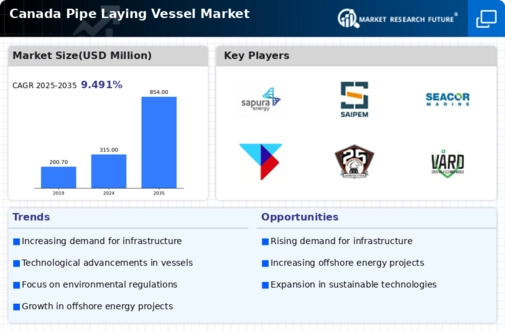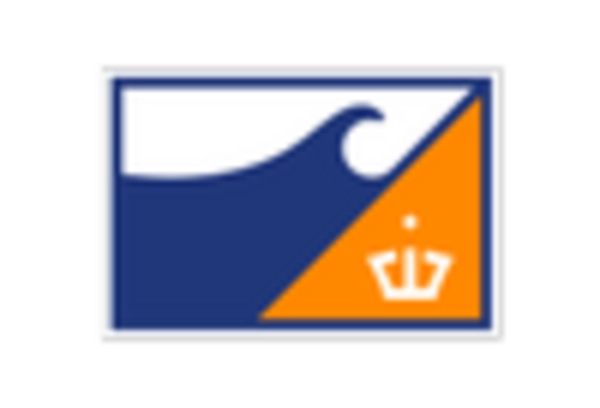Growing Energy Demand
The rising energy demand in Canada is a significant driver for the pipe laying-vessel market. With the country's energy consumption projected to increase by approximately 15% by 2030, there is a pressing need for efficient pipeline systems to transport oil and gas. This demand is further fueled by the expansion of the oil sands and natural gas sectors, which require extensive pipeline networks. Consequently, the pipe laying-vessel market is poised to benefit from increased investments in pipeline construction and maintenance. The need for modern vessels equipped with advanced technology to handle complex laying operations may also emerge, indicating a shift towards more sophisticated solutions in the market.
Increased Foreign Investments
Increased foreign investments in Canada's energy sector are likely to impact the pipe laying-vessel market positively. As international companies seek to capitalize on Canada's rich natural resources, there is a growing demand for infrastructure development, including pipelines. This influx of capital can lead to more projects requiring pipe laying vessels, thereby stimulating the market. The pipe laying-vessel market may experience growth as foreign entities partner with local firms to enhance operational capabilities. This collaboration could also foster knowledge transfer and technological advancements, further strengthening the market landscape.
Infrastructure Development Initiatives
The ongoing infrastructure development initiatives in Canada are likely to bolster the pipe laying-vessel market. The Canadian government has committed to investing approximately $180 billion over the next decade in infrastructure projects, which includes transportation and energy sectors. This investment is expected to create a robust demand for pipe laying vessels, as they are essential for laying pipelines for oil, gas, and water distribution. The increasing need for modernized infrastructure, particularly in remote areas, may further drive the market. As projects progress, the pipe laying-vessel market could see a surge in orders, leading to enhanced operational capabilities and technological advancements in vessel design.
Technological Innovations in Vessel Design
Technological innovations in vessel design are transforming the pipe laying-vessel market. The introduction of automation and advanced materials is enhancing the efficiency and safety of pipe laying operations. For instance, the integration of dynamic positioning systems allows vessels to maintain precise locations during installation, reducing the risk of accidents. The pipe laying-vessel market is witnessing a shift towards vessels that are not only more efficient but also capable of operating in challenging conditions. This trend may lead to increased competition among manufacturers to develop cutting-edge vessels that meet the evolving needs of the market.
Environmental Regulations and Sustainability
The emphasis on environmental regulations and sustainability in Canada is shaping the pipe laying-vessel market. Stricter environmental policies are being implemented to minimize the ecological impact of pipeline construction. This trend necessitates the adoption of advanced vessels that comply with these regulations, potentially increasing operational costs. The pipe laying-vessel market may need to innovate and invest in eco-friendly technologies to meet these standards. As companies strive to align with sustainability goals, the demand for specialized vessels that can operate in sensitive environments is likely to rise, creating new opportunities for market players.

















Leave a Comment